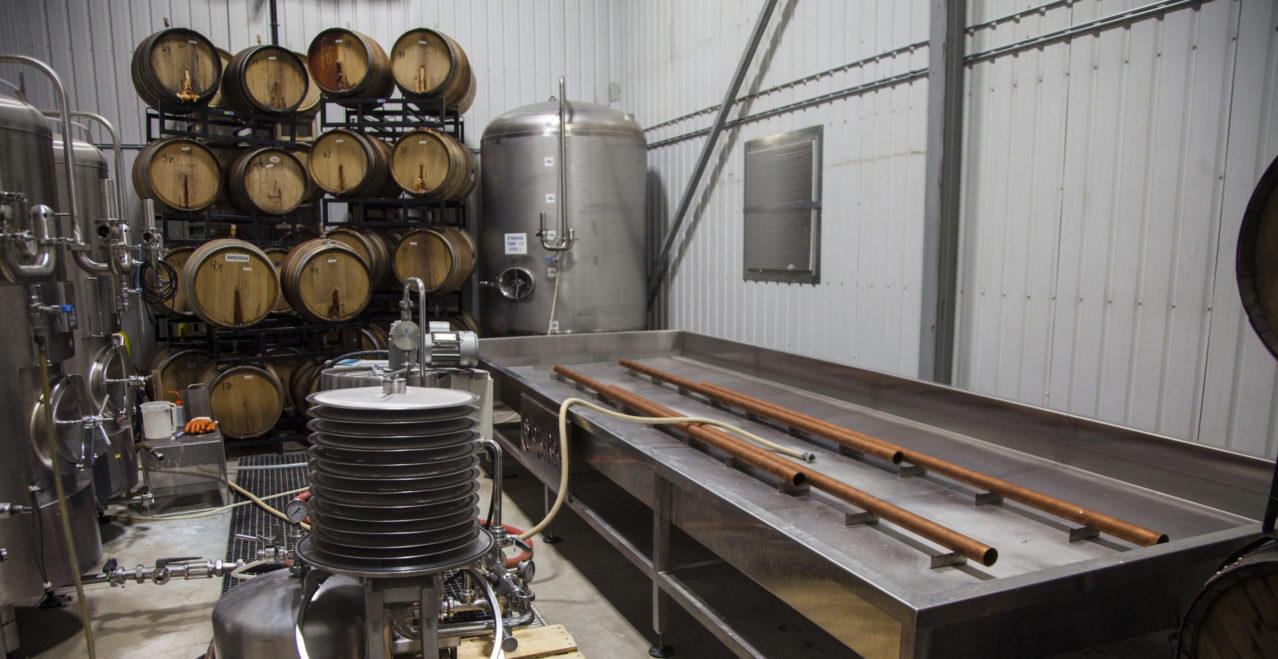Framboise - Sold Out
Lambic Style Framboise
Once you experience the gigantic tart raspberry flavour, you'll have trouble keeping this one under the table.


NEW PRODUCTS
January 20, 2020
For the Love of Lambic

Koelschip “Coolship”
Today’s craft beer enthusiast has without a doubt noticed the rise of sour beer, and perhaps even ventured into trying them. Extremely popular variations exist in every bottle shop, craft beer bar, and even in your corner pub.
But isn’t sour beer spoiled beer?
The answer… maybe. Certainly, if you happen to detect sourness, tartness, or anything acetic in your Pilsner, IPA, or Brown Ale it’s a classic example of what we’d call an ‘off-flavour’ and would usually denote a fault or flaw in the beer. Brewers for centuries have gone to great length to avoid sourness in their beers. But what if we happened to steer into this sourness?
The truth is that sourness, and the variety of yeasts and bacteria that contribute to it can add a fantastic variety of aromas, complexities, and flavours to your beer. What about a beer that reminds you of balsamic vinegar? Or one that tastes like a tart cherry cola? Sourness pushes the boundaries of what a beer can be.
So, how do you get a sour beer? The most common way is, by accident. Improper brewing technique or poor storage can all lead to bacterial contamination which will contribute to sourness. The next time you’ve ordered a beer and that first sip comes in and your taste buds start flaring up as if you’ve just had a sour candy, your first question should be “is this supposed to be here?”. The rise of sour has had an unfortunate side effect of being able to pass off mistakes in beer as something that was intended.
But what if you want to brew a sour beer? Well, there are two ways to acquire these necessary yeasts and bacteria; by far the most common way is to purchase some refined and curated versions from a brewing supplier’s catalogue.
but if you’d like to be authentic… you can build a “Coolship”
In an effort to create authentic Lambic style sour beer Big Rock created a coolship in our Calgary brewery in 2015. But what is it? Essentially, it’s a giant shallow open pool designed to cool hot wort prior to fermentation. In Medieval times and times prior to heat exchangers, this would have been the primary way that the hot wort was cooled to a temperature that was safe enough to add the yeast. The vessels resembled hallowed out boats, making it a ship designed to cool, “coolship”. However, the vessels by design were fully open and exposed to the surrounding air. Brewing, usually, is a constant battle to protect your beer from air. The threat of oxidation and contamination is so great with air exposure that entire brewing systems are designed specifically to avoid this threat. But this exposure is exactly what makes sour beer, and Lambic style beers, so exciting, unique, and challenging. We want the wort to become fermented with, essentially, whatever is present in the atmosphere and in the fabric of the brewery itself. We want it to ferment spontaneously. Once we have our hot wort loaded into the coolship, we just open the windows. Similar to sourdough bread, all that’s required for fermentation is already around us, and in fact is unique to your location.

To be a true Lambic beer, a brewer would need to be exposing their wort to the unique microflora native to the Zenne valley around Brussels. The only factor that keeps our Under the Table series a “Lambic-style” instead of a true Lambic is that we’re fermenting with the unique microflora of South East Calgary! Floating around us always are all the necessary yeasts and bacteria for fermentation, and each contributes a different flavor to the finished beer. Acetobacter gives the vinegary tartness. Brettanomyces give the wildly polarizing earthy, barnyard, and horse blanket aromas. Lactobacillus produces its namesake product: lactic acid. And of course, the star of the show is Saccharomyces Cerevisiae or “brewer’s yeast”.
Lambic-style beers have also added two other dimensions; time in barrels, and sometimes fruit. Our first version, a Kriek, aged the beer in wine barrels with loads and loads of cherries. Our second, a Framboise, had the beer aged with Raspberries. The time in the barrel allowed all these yeasts and bacteria to slowly take their time to ferment, mellow out, and increase in complexity.
So, if you want a sour beer, why doesn’t everyone do it this way? A few reasons, it’s extremely hard, takes a very very long time (for example, our Kriek aged 16 months in barrels before release), and the environment you want to create to allow these beers to thrive will ruin virtually every other style of beer. Breweries that put out the best Lambic styles beers proudly showcase the levels of bacteria growth living all around the brewery, as its these microorganisms that become the flavour of their brewery… but this is not so great when you’re brewing a Pilsner or an IPA! Our coolship room is quarantined off, cannot be accessed from within the brewery, and has only a few of our brewers allowed in. These extra steps are required for us to not only knock out fantastically complex spontaneously fermented beers but also to safeguard the rest of the brewery that puts out the craft beers the nation knows and loves.
So what’s coming out next? Stay tuned…

Authored by:
Patrick Marsh – Big Rock Sales Representative
Certified Cicerone